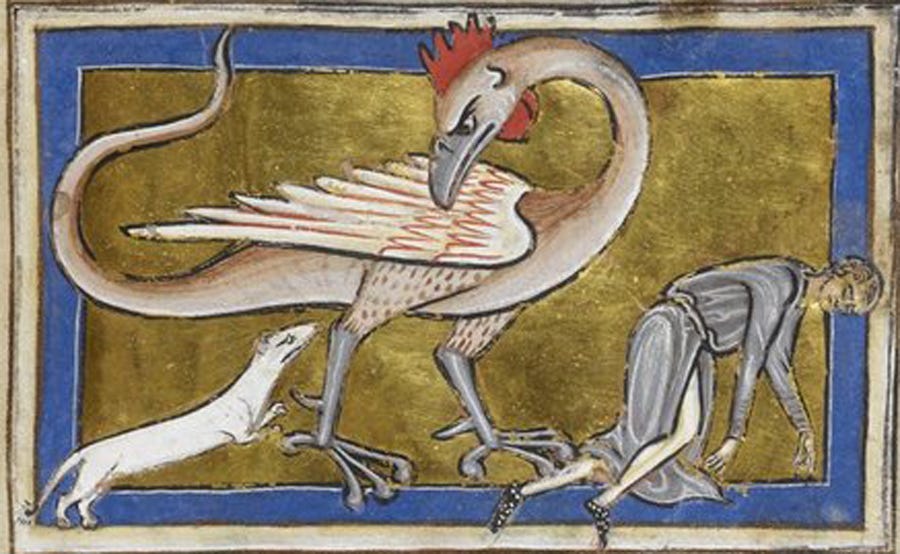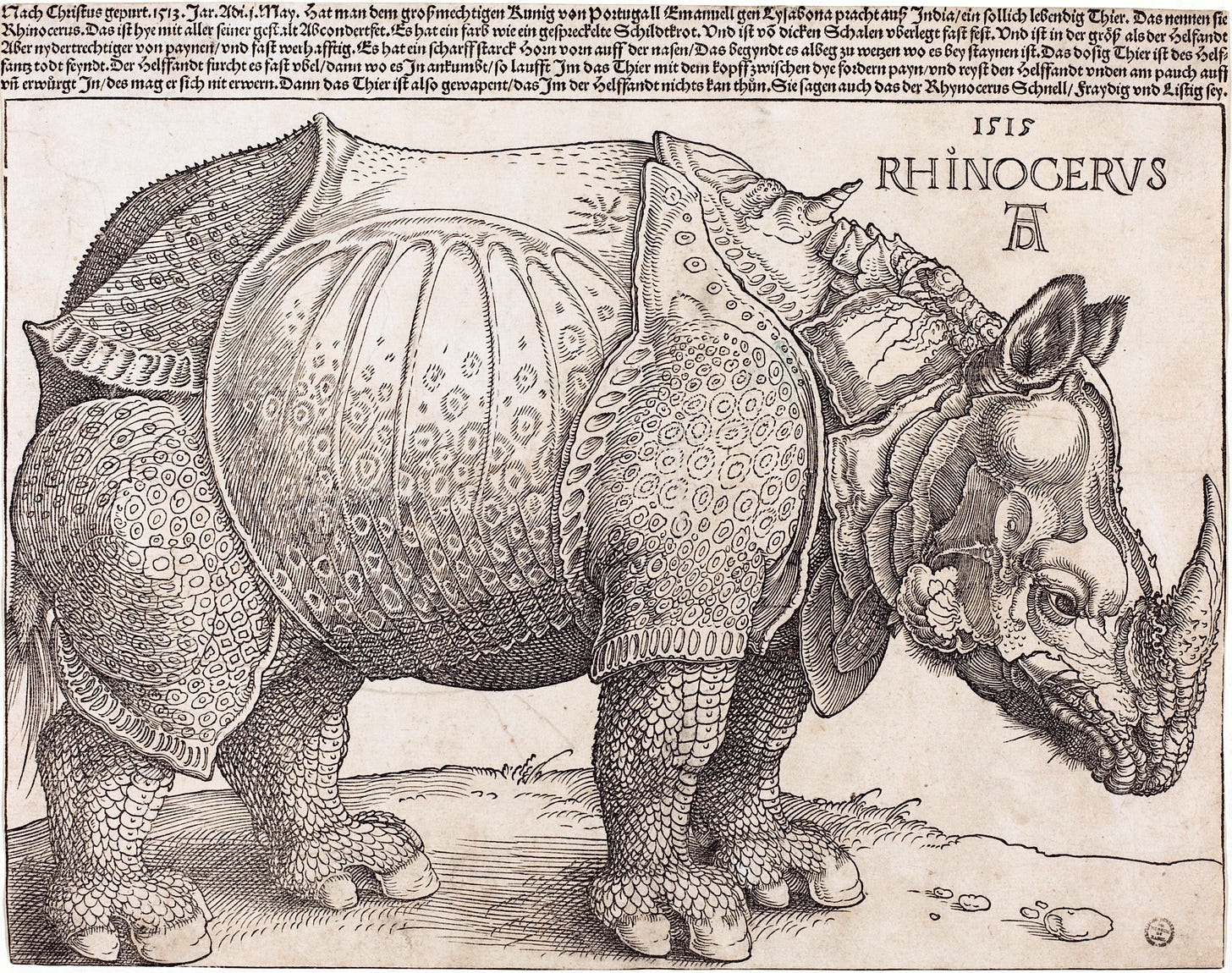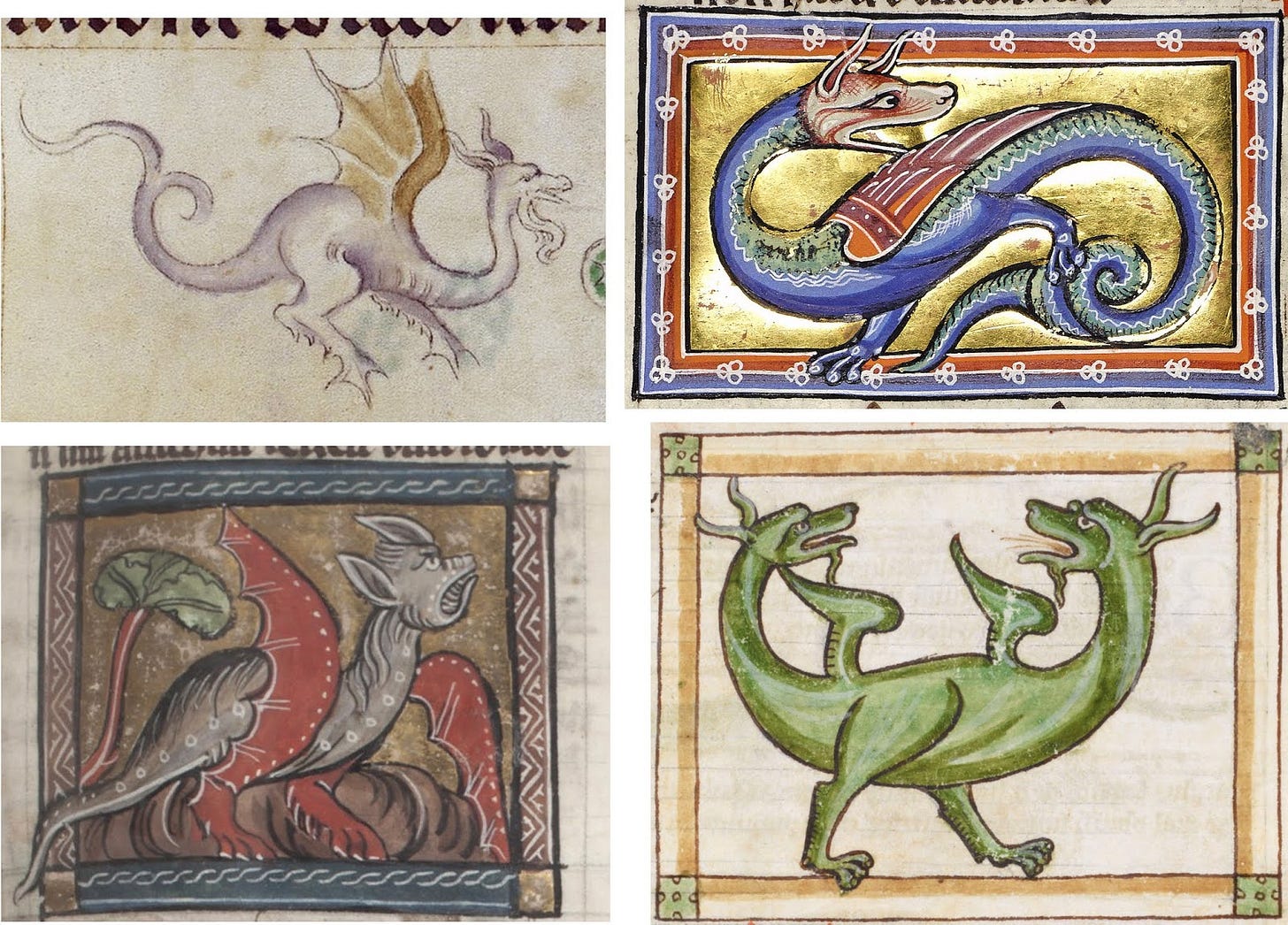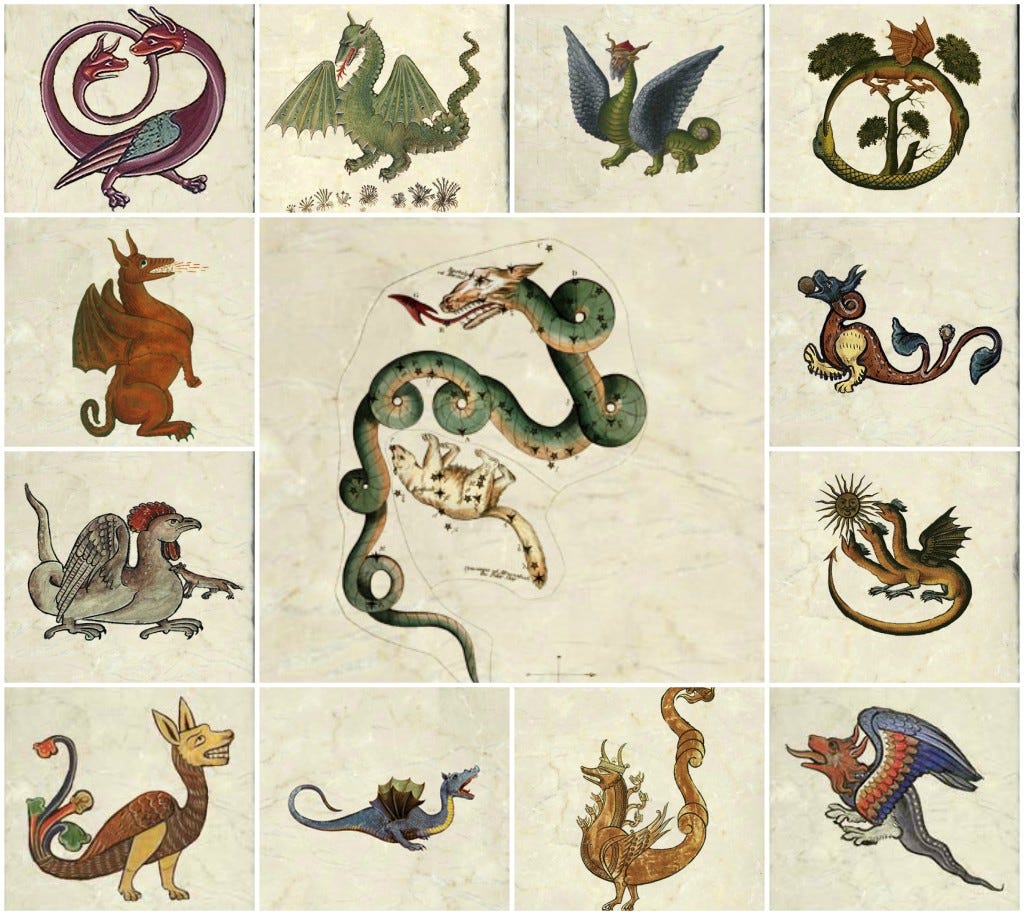Describing a Dragon
Part 1 of 2
There’s no such thing as a dragon.
You are probably thinking, Duh, but I mean that in a different way than you might expect.
When I was a kid, I had a very narrow view of dragons. If you asked me to draw one, you would have gotten something similar to this:
Very middle-of-the-road Western dragon. Four legs, plus bat wings. Must have long neck and tail. Back in 1983, when I was ten, there was a flair for giving dragons little chin beards, and I was NOT INTO IT. Put that kind of thing on an Eastern dragon, maybe, but stop ruining perfectly good Western dragons by making them look thoughtful. This dragon looks like he owns a tote bag.
Why did I care so much about dragons? They are, with apologies to Godzilla, the King of the Monsters. A sort of perfect apotheosis of all our fear and awe of the natural unknown. That didn’t have to be true. Imagine a world in which the cultural position of dragons was taken instead by…griffons. Manticores. The Questing Beast. Phoenixes. Chimera. The Sphinx. Or really ANYTHING ELSE, because our modern interpretation of the dragon is, after all, made up. We could instead be really into a monstrous mammal with six legs, saber-teeth, and a shark fin. There could be pictures of them on backpacks.
If you’re looking for a hoot, browse some of the illustrations from medieval bestiaries—ancient field guides to animals once believed to actually exist.
Some entries seem fine at first glance. This image below is not actually that bad an illustration of lions, right? Considering the illustrator had probably never seen so much as a picture of one, much less an actual specimen?

Other entries are just baffling. What’s up with the basilisk?
Did anyone think this was real? Did it start with a traveler’s account of an ostrich and get lost through a game of telephone? Did it start as pure fiction, a traveler trying to impress, so that he hastily threw together some animal parts and claimed he’d seen such a beast in farthest Abyssinia? What’s up with that weasel?
I mentioned the Questing Beast above—maybe some of you don’t know what that is. It’s a monster from Arthurian legend, described as being a mix of snake, leopard, and hart (deer), with some lion haunches thrown in. A while back I actually wrote a verse about it, as part of a larger picture book manuscript that’s probably never going anywhere:
But look—
this is true—
in old stories of kings,
there’s a monster that’s made of the following things:
A leopard down there and a snake up in here
and the legs (and the cloven-hoofed feet) of a deer.
The reason—again, this is true, and you’ll laugh—
is the writers had meant to describe a giraffe.
They wrote it to mean one;
they’d just never seen one.
There’s a reason the giraffe’s genus name is Camelopardalis—in medieval times it was described as half camel and half leopard. People put new animals in a framework they could understand.
Even as late as 1515, Albrecht Dürer created his famous drawing of a rhinoceros, an animal he had never seen. Based on another artist’s loose sketch and a secondhand description, he drew what would—for more than two hundred years in European circles—be mistakenly regarded as an accurate representation of the animal.
This thing is a monster, folks. But sometimes a monster is just an animal you haven’t caged yet.
Anyway, dragons. Here’s some:
All two-legged, which of course makes more sense, if you’re actually concerned with having your dragon make sense. Only insects have more than two limbs plus wings. But the medievals tried all kinds of things out:
There’s no such thing as a dragon. But I mean that in sort of the same way people say there’s no such thing as a fish. Worse, even—in my next post I’ll try to make the case that EVERY living thing is a dragon. And if everything is, nothing is.
See you soon.











Dragon with a tote bag killed me dead. Pls give this dragon a beanie and access to a farmers market.
(I was re-reading Jeff Smith's Bone, and all the dragon types at the end. You and Jeff Smith, equal in dragon philosophy. So good!)
On pins and needles for part 2.